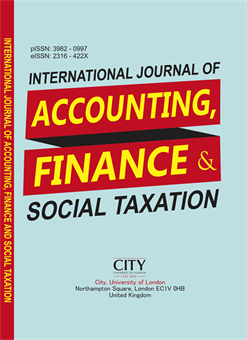INTERNATIONAL JOURNAL OF ACCOUNTING, FINANCE AND SOCIAL TAXATION (IJAFST)
The Analysis of Capital Structure Theories in Emerging Markets
E-ISSN: 2316-422X
P-ISSN: 3982-0997
DOI: https://iigdpublishers.com/article/304
The primary purpose of this paper is to verify the basic assumptions according to the pecking order and Trade-off theory for the capital structure in listed firms on KSA, Iran, and the Iraq Stock Exchange of West Asian countries. The pooled ordinary least squares (OLS) were used to examine the relationships of the three countries for determinants of the capital structure from 2016 to 2020 for the data of non-financial companies. Finally, we obtained 116 Saudi, 82 Iranian, and 35 Iraqi companies. Our findings support capital structure theories of the pecking order theory better to describe the capital structure in KSA. This is a significant marker like these societies, yet we found some determinants of the capital structure consistent with trade-off theory in the context of Iran and Iraq. So, it can be said that the Islamic nature of these countries brings companies closer to issuing shares than using debt as a means of capital financing, as Muslims believe that the usury (Raba) comes from the interest of debt. Our results indicate that the growth opportunities have a positive relationship with LEV, but it is not significant for the three countries. This paper can give a unique picture of Islamic societies and how to get capital financing. Despite the tremendous economic challenges among the three countries, we found a remarkable similarity in the choice of pecking order theory for the capital structure; naturally, this paper is of interest to owners and managers who are trying to obtain an ideal capital structure to improve the fixed performance of the company. This is the first paper that examines the determinants of the capital structure in Islamic West Asian countries. It can be an essential reference for future studies in this field. Internationally, capital structure gives an excellent opportunity to understand the investment trends in these countries.
Saad Raad Faysal
Ahmed Sheikh, N., & Wang, Z. (2013). The impact of capital structure on performance: An empirical
study of non-financial listed firms in Pakistan. International Journal of commerce and Management, 23(4), 354-368.
Allini, A., Rakha, S., McMillan, D. G., & Caldarelli, A. (2018). Pecking order and market timing theory in emerging markets: The case of Egyptian firms. Research in international business and finance, 44, 297-308.
Antoniou, A., Guney, Y., & Paudyal, K. (2008). The determinants of capital structure: capital market oriented versus bank-oriented institutions. Journal of financial and quantitative analysis, 43(1), 59-92.
Belsley, D. A. (1991). A guide to using the collinearity diagnostics. Computer Science in Economics and Management, 4(1), 33-50.
Brealey, R. A., Myers, S. C., & Allen, F. (2008). Brealey, Myers, and Allen on real options. Journal of Applied Corporate Finance, 20(4), 58-71.
